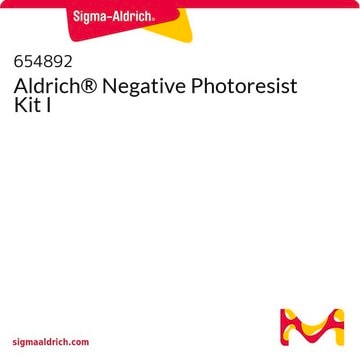154709
Kohlenstoffdisulfid
spectrophotometric grade, ≥99%
About This Item
Empfohlene Produkte
Qualität
spectrophotometric grade
Dampfdichte
2.67 (vs air)
Dampfdruck
5.73 psi ( 20 °C)
Assay
≥99%
Form
liquid
Selbstzündungstemp.
212 °F
Expl.-Gr.
50 %
Methode(n)
UV/Vis spectroscopy: suitable
Verunreinigungen
≤0.03% water
Abdampfrückstand
<0.0005%
Farbe
APHA: ≤10
Brechungsindex
n20/D 1.627 (lit.)
bp
46 °C (lit.)
mp (Schmelzpunkt)
−112-−111 °C (lit.)
Dichte
1.266 g/mL at 25 °C (lit.)
λ
H2O reference
UV-Absorption
λ: 386 nm Amax: 1.0
λ: 388 nm Amax: 0.50
λ: 394 nm Amax: 0.25
λ: 403 nm Amax: 0.10
λ: 410 nm Amax: 0.05
λ: 500-750 nm Amax: 0.01
SMILES String
S=C=S
InChI
1S/CS2/c2-1-3
InChIKey
QGJOPFRUJISHPQ-UHFFFAOYSA-N
Suchen Sie nach ähnlichen Produkten? Aufrufen Leitfaden zum Produktvergleich
Sonstige Hinweise
All -D packages are 100% the same product, same quality, same specification as the package sizes previously sold without a -D.
Signalwort
Danger
Gefahreneinstufungen
Acute Tox. 4 Inhalation - Eye Irrit. 2 - Flam. Liq. 2 - Repr. 2 - Skin Irrit. 2 - STOT RE 1
Zielorgane
Peripheral nervous system,Central nervous system,Cardio-vascular system,Eyes
Lagerklassenschlüssel
3 - Flammable liquids
WGK
WGK 2
Flammpunkt (°F)
-22.0 °F - closed cup
Flammpunkt (°C)
-30 °C - closed cup
Persönliche Schutzausrüstung
Eyeshields, Faceshields, Gloves
Hier finden Sie alle aktuellen Versionen:
Besitzen Sie dieses Produkt bereits?
In der Dokumentenbibliothek finden Sie die Dokumentation zu den Produkten, die Sie kürzlich erworben haben.
Unser Team von Wissenschaftlern verfügt über Erfahrung in allen Forschungsbereichen einschließlich Life Science, Materialwissenschaften, chemischer Synthese, Chromatographie, Analytik und vielen mehr..
Setzen Sie sich mit dem technischen Dienst in Verbindung.








